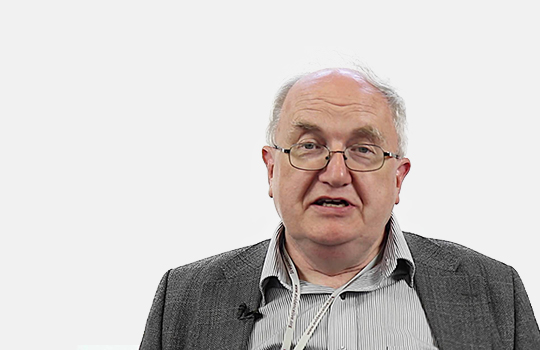Richard Lehman reviews the latest research in the top medical journals
 NEJM 14 Sep 2017 Vol 377
NEJM 14 Sep 2017 Vol 377
What shall we do with the patent foramen ovale?
When I was still a full-time GP, I encountered two young women who had unexplained strokes. Both were then found to have patent foramina ovalia (I think I’ve got that plural right) and went on to have PFO closure procedures. I thought it was all very clever and fascinating, and asked a medical registrar to present their cases to our weekly GP/hospital doctor meeting. I was somewhat chastened to learn from her that (in 2005 or thereabouts) the evidence for PFO closure in cryptogenic stroke was largely non-existent. Three papers in this week’s NEJM put that right.
Firstly a French study with a mean follow up of over 5 years. Among patients (aged 16-60) who had had a recent cryptogenic stroke attributed to PFO with an associated atrial septal aneurysm or large interatrial shunt, the rate of stroke recurrence was lower among those assigned to PFO closure combined with antiplatelet therapy than among those assigned to antiplatelet therapy alone. PFO closure was associated with an increased risk of atrial fibrillation.
Next a US-based manufacturer funded trial with similar recruitment criteria and a mean follow-up of nearly 6 years. Once again the PFO closure group showed a much lower incidence of subsequent stroke, and in this trial atrial fibrillation in all cases resolved before hospital discharge, but there was an increase in venous thromboembolism. The drugs used in the non-closure group were aspirin, warfarin, clopidogrel, and aspirin combined with extended-release dipyridamole.
Finally we have a multinational trial which, like the first one, compared PFO closure plus anti-platelet therapy with anti-platelet therapy alone.
Again, there was a decrease in stroke in the closure group, but more atrial fibrillation.
So, some questions remain. Do these trials demonstrate clear between-device differences? Do we need new long-term trials using direct oral anticoagulants as the comparator? And I’m sure you can think of more.
Uselessness: a key outcome for diabetes drugs
I’m an old man and I have long since said all I want to about drugs for diabetes. I’ll just commend to your attention two of the latest abstract summaries from the world’s most prestigious journal:
“Among patients with type 1 diabetes who were receiving insulin, the proportion of patients who achieved a glycated hemoglobin level lower than 7.0% with no severe hypoglycemia or diabetic ketoacidosis was larger in the group that received sotagliflozin than in the placebo group. However, the rate of diabetic ketoacidosis was higher in the sotagliflozin group.” Q: In that case, why would you use sotagliflozin in type 1 diabetes?
Next:
“Among patients with type 2 diabetes with or without previous cardiovascular disease, the incidence of major adverse cardiovascular events did not differ significantly between patients who received exenatide and those who received placebo.” Q: Why not give them placebo then?
JAMA 12 Sep 2017 Vol 318
The return of reflux after surgery
“Laparoscopic antireflux surgery was associated with a relatively high rate of recurrent gastroesophageal reflux disease requiring treatment, diminishing some of the benefits of the operation.” What’s your idea of a “relatively high rate” in this situation? Relative to what? Actually, in this Swedish follow-up study lasting a mean of 5.6 years, recurrence of symptoms only occurred in 17.7% of patients, and since the great majority of these opted for medical treatment, the overall proportion of the total cohort who underwent further surgery was less than 3%.
Removing axillary nodes in early breast cancer surgery
Here’s a 10-year survival study of women who underwent localised resection and radiotherapy for T1-2 breast cancer. If 1-2 metastases were found in the sentinel nodes, they were randomised either to sentinel node resection only or to complete axillary node resection. Got that? It took me a couple of goes. Survival was actually slightly better in the women who had sentinel node removal alone. They also presumably had a lower incidence of lymphoedema, though disappointingly I can’t see any mention of that in the paper.
HRT: neutral for all-cause mortality
Oh dear. The narrative about post-menopausal oestrogen replacement has changed again. It’s not exactly an advertisement for the stability of evidence-based medicine. What is the relationship between use of menopausal hormone therapy vs placebo for 5 to 7 years and mortality over 18 years of follow-up?
The answer, it turns out, is zero. Hot flushes all round.
JAMA Intern MedSep 2017
How profitable are new cancer drugs?
Vinay Prasad is tireless and fearless and—according to a recent profile—occasionally a bit tactless. But should you keep smiling graciously when you’re an oncologist faced with the ruthless peddling of marginal hope to dying people at vast expense? In this article, Vinay politely examines how much money it takes to develop a cancer drug, and how much profit is likely to accrue. “In this analysis of US Securities and Exchange Commission filings for 10 cancer drugs, the median cost for developing a single cancer drug was $648.0 million. The median revenue after approval for such a drug was $1658.4 million.” So a billion bucks a throw—and this has to come from somebody.
Ann Intern Med 12 Sep 2017 Vol 167
Diagnostic reasoning: an endangered skill?
If you’re interested in lifelong learning and being a good diagnostician, do try to get hold of this article. If you’re not interested in lifelong learning and being a good diagnostician, consider a different career. And yet we do so little as a profession to encourage a deep exchange of skills across a lifetime in medical practice. Arabella Simpkin’s snapshot of how diagnostic thinking is taught to junior residents at Massachusetts General Hospital is inspiring, but only hints at what should be going on from entry into medical school up to the point where we hang up our stethoscopes.
The Lancet 16 Sep 2017 Vol 390
Global burdens and successes
William Blake said that “He who would do good to another must do it in Minute Particulars: general Good is the plea of the scoundrel, hypocrite, and flatterer, for Art and Science cannot exist but in minutely organized Particulars.” The global surveys paid for the Gates Foundation and published en masse this week in The Lancet are best when they go into Minute Particulars, as for instance in the survey of global, regional, and national age-sex specific mortality for 264 causes of death, 1980–2016. For such a wealth of insight, one can forgive the odd barely intelligible general pronouncement like “Increasing levels of years-of-life lost might reflect outcomes from conditions that required high levels of care but for which effective treatments remain elusive, potentially increasing costs to health systems.” It’s similar for the five other articles.
Reconsidering respiratory labels
One key to progress in medicine is to reconsider diagnostic labels. “Asthma” used to mean breathlessness generally, crudely divided into cardiac asthma and pulmonary asthma. Nowadays we just cling to the latter, but isn’t it time to let go? I’m glad to see an article on the Lancet website arguing for just that.
“We suggest that the only way we can make progress in the future is to be much more clear about the meaning of the labels used for asthma and to acknowledge the assumptions associated with them. Airways diseases should be deconstructed into traits that can be measured and, in some cases, modified (ie, treatable traits), and which are set in the context of social and environmental factors and extrapulmonary comorbidities.” The authors are fond of eosinophils as the current fashionable marker, but I’m not so sure. The point is that we keep flexibility in our diagnostic thinking, and don’t go too far up any one mechanistic byway.
The BMJ 16 Sep 2017 Vol 358
Keep taking the antidepressants for anxiety, OCD & PTSD
Here’s a meta-analysis with lots of statistical detail and a clear take-home message. Discontinuation of antidepressant treatment results in twice the relapse rate among responders with anxiety, obsessive-compulsive disorder and post-traumatic stress syndrome, compared with treatment continuation for up to a year. But I was quite unable to find out what “antidepressants” actually meant. In a hundred years’ time, I suspect that the drugs we call that will be considered unbelievably crude and heterogeneous, as will these diagnostic categories. Probably most of these patients were taking a variety of serotonin reuptake inhibitors. They do seem to work for some.
Intra-ocular pressure: a bad test for glaucoma?
This substudy from EPIC-Norfolk strongly suggests that screening for glaucoma using intra-ocular pressure is pointless. In 76% of patients with newly diagnosed primary open angle glaucoma (83/107), the mean IOP was under the threshold for ocular hypertension (21 mm Hg). No one IOP threshold provided adequately high sensitivity and specificity for diagnosis of glaucoma. All those puffs in the eye for nothing.
Plant of the Week: Geranium cinereum “Ballerina”
The hardy geraniums (cranesbills) are indispensable small perennials for every garden, and although we are well stocked already, it’s an unusual year that doesn’t see us buy in one or two new varieties.
English gardens have gone into wet, funereal mode early this year, but there are still a few geraniums trying to maintain good cheer. Just now, “Ballerina”, a form of G cinereum, is about the best. It’s scrambling about on the wet soil or on various small plants, carrying abundant dusky purple flowers with a dark centre and black veins. It’s been doing this for months already. When it’s over, gardening ceases, and life becomes all about keeping warm and gathering leaves.
